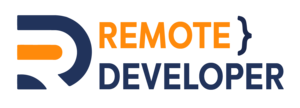Starting a new profession is not as easy as it sounds. Becoming an expert on something requires years of hard work, learning, and passion for whatever industry you want to dwell in.
Like other technical professions, UI/UX Designers had to undergo excessive training and experience to be considered designers. They must build up their skills and portfolio to prove their ability and be hired for a position. Because of this, many new aspiring designers are demotivated to try this career.
But no one becomes a professional overnight. Everyone starts from scratch. As such, this article aims to explain how to be a UI/UX Designer, its primary job description, and what skills you need to attain to start your designer journey.
What Is UI design?
UI design is designing the interface for an application, website, or other software. It includes defining the system’s structure and how it will appear to users. Similarly, UI design needs to convey the company’s branding on every design.
The primary goal of UI design is to make sure that a product is more visually appealing and intuitive so that it’s easier for people to use it. It also needs to be visually enticing to want to use it.
Although the primary goal of UI design is to make an app attractive and easy to use, it also aims to design something easy to understand and use by the user.
UI designers ensure that an application’s interface is functional, attractive, and easy to use. They are also in charge of generating graphics, illustrations, animations, and other visuals that complement the design.
What Is UX design?
On the other hand, UX design is a design discipline that focuses on enhancing user satisfaction by improving usability and accessibility. It includes the process of researching, planning, designing, and managing to build an interactive product that is easy to use, understand, and enjoyable.
The main goal of UX design is to implement UI design and make sure that it is functional. Users have a seamless experience with your product.
UX designers use various tools, techniques, and principles to create a positive experience.
What Is a Typical UX/UI Job Description?
Although coverage of both UI and UX differs, most companies require designers who can do both. UI/UX Designers are the backbone of the design team. They are responsible for designing the layout, interaction, and functionality of a website or application.
Likewise, below is the primary UI/UX designer job description:
- Designing the layout and interactions for applications and websites
- Creating wireframes and prototypes
- Gathering feedback from stakeholders and users
- Communicating with developers to create a seamless product
- Include branding and color into their design principles like color theory, typography, layout grids, and more to create a beautiful interface that’s also functional.
5 Important Factors on how to be a UI/UX Designer
Although most designer starts their designer journey by studying arts or animation in college, a lot of UI/UX Designer are self-taught. You can try applying to several booth camps or short courses to get a grasp of it.
But still, most companies hire skilled people and have a portfolio. Likewise, here are five ways to become a UI/UX designer even without experience.

1. Step 1 – Learn the Fundamentals of UX Design
Designing is not just creating something pretty or constructing a functional feature. A good designer should have the ability to examine different angles of a product and what users perceive from it.
As such, UX Design is arguably the most critical part of an outstanding design. UX design aims to create a wonderful experience for the user and meet their needs. Likewise, you need to be aware of the user’s physiology and understand how the user perceives your designs.
And to do that, you need to be aware and apply the central concept of design thinking in your design. These include empathy, strategy, usability inclusivity, and validation.
2. Step 2 – Learn How to Use Key Design Tools
Designers heavily rely on digital tools in doing their work. As such, you need to acquaint yourself with the latest and most popular design tools most UI/UX Designer uses. You can try applying for UI/UX design course, but you can also be a self-taught designer. The internet has a lot of free resources to offer to get yourself familiarized with these design tools.
Here are some of the latest programs that can be useful to know:
- Adobe Photoshop and Illustrator for essential elements
- Sketch for interface design
- Adobe XD for interface design, prototyping
- Invision App for prototyping and collaboration
- RedPen for collaboration
- Figma for interface design with collaboration capability
- Balsamiq for creating layouts
3. Step 3 – Develop a Portfolio to Showcase Your UX Design Work
Once you familiarize yourself with the latest tools, the next step to becoming a UI/UX designer is creating your portfolio. You may have the experience and credentials, unlike others. But if you cannot demonstrate your skills, most companies will turn you away from any UI/UX positions.
There is no solid strategy when it comes to portfolio building. You must keep designing and designing as more idea comes to your mind. Have an idea for a website? Design it! It doesn’t matter if it’s an actual project or not. You have to keep designing to showcase your skills.
Just make sure that your portfolio defines your personality and creativity. Every piece of your design should portray how you did it.
If you are up to it, create a prototype of the company you apply to. Show them how you can add value to their company and what they can get if they hire you.
4. Ask for feedback
When it comes to honing your skills, there is no better way than asking for feedback. A lot of people think that feedback rarely does anything to people. However, it helps you grow as a designer as it defines areas where you can improve. Your design might look great to you, but there is an eyesore to other people.
There are several ways to ask for feedback. You can try asking your friends, forever colleagues, or even previous professors what they think of your designs. Similarly, there are tons of online design forums with several tenured designers that can give your guidance in improving your skills.
Use this feedback – negative or positive – to fuel your skills.
5. Stay up to date with the latest design trends
No matter which industry you are in, all trends keep changing. As a designer, it is your responsibility to keep up with trends to produce great work for your company and clients. Here are a few things you can try to stay up to date with the current design trends:
- Be an active member of the online design community. There are tons of graphic design websites and forums where most designers showcase their art, such as Behance and DeviantArt. Try to spend time with these websites and interact with other users. Share your work with them and ask for feedback.
- Subscribe to the industry magazine, books, and even newsletter. There are a lot of reference materials where you can get in-depth information about the latest design trends. Try to invest in prints or websites that can inspire your design style.
- Browse online design galleries. Inspiration is always available on the internet. Design galleries like Design Shack, HTML Inspiration, and Pinterest offers a wide range of creative design that will surely inspire your work and get great ideas and reference for your design
Is UI/UX Design a Growing Field?
Due to the increased need for digitalization and application development, UI/UX designers are currently in demand. LinkedIn determined that in 2020, UX Design is one of the top 10 most in-demand skills in the United States, France, Germany, United Kingdom, and Australia.
Furthermore, the US Bureau of Labor Statistics indicated that web developer and digital designers jobs are projected to grow by 13% from 2020 to 2030.
This is an excellent outlook for those who want to start their UI/UX career this year.
Conclusion
And there you have it. If you are looking to start your career as a UI/UX designer, there are many things you need to learn and built-in order to be considered an expert. This article can help you start your career journey. Always remember to commit to the tips mentioned above.
Are you looking for a career as a UI/UX engineer? A remote Developer can help you. We are hiring! Contact us now!

